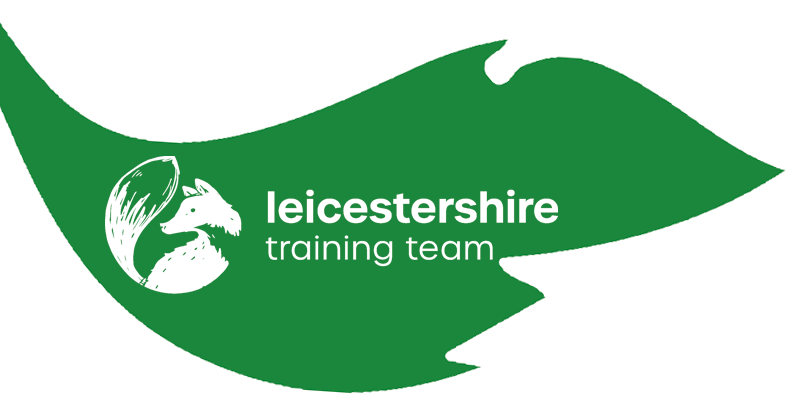What is Continuing Professional Development (CPD)
Posted on 5th February 2022
If you want to continue working as a nurse in the UK, there's one thing you legally have to do; and that is remain on the NMC's register. The NMC (Nursing & Midwifery Council) are the only register in the UK for nurses & midwives, if you're not on the register, you can not legally practice.
Every three years the NMC are asking people to revalidate. This includes doing enough CPD hours, including enough participatory learning, but what does this mean?
In this article, we cover all you need to know about continuing professional development revalidation in health and social care, including (click the sentence to head straight there):
Lets get straight to it!
What is Continual Professional Development?
Most nurses associate continual professional development with clinical training, however this is not strictly the case. Yes, CPD definitely is training, both mandatory and clinical training, but it also includes attending lectures, webinars, conferences, workshops, reading and reviewing publications, researching and coaching too. That's quite a list!
The learning must be relevant to your area of practice. For example a mental health nurse researching information on the latest anti-depressant medication. Another example is an adult nurse refreshing their knowledge on heart failure.
You must be able to explain why its is useful for you to obtain this information.
You must be able to link the learning with the NMC Code of Practice.
CPD learning can be independent, online/virtual, or face to face. Please be aware that the NMC do require you to do 20 hours participatory learning. To find out more on participatory learning, click the link: What is participatory learning?
How Do I Ensure I've Done Enough?
The NMC have kept this very simple, all you need to do is the following:
A total of 35 hours of CPD every three years,
Of the 35 hours, 20 hours must be participatory. That's not a total of 55 hours of learning, only 35 hours are needed in total. For example 15 hours could be independent research, attending conferences and reading. The other 20 hours could be workshops, online training, face to face coaching at you workplace.
Keep an accurate record of the CPD you've completed over the past three years, totalling to at least 35 hours, using the NMC template. To find the template, click here: How do I record my CPD training?
What Is Participatory Learning?
Participatory learning simply put is when you undertake a learning activity with someone else. Whether that's one other person or a whole group of people, including hundreds of people! Participatory learning does not need to be face to face, online or virtual platforms also count as participatory.
We're put below a list of examples for you:
Attending a conference,
Attending a workshop,
Attending an online or face to face training session,
University courses,
Peer reviews,
Coaching or mentoring,
Researching and reviewing the data as part of a team/group
Please remember that the topics or training you attend but be relevant to your practice. Doing a university course on accounting or attending a conference on climate change is not relevant to your practice. However, attending a conference on the NMC code of practice, or attending a workshop on bandaging technique is more likely to be considered relevant.
What is relevant will differ from nurse to nurse. Some nurses working in a care home may spend more CPD hours on skin tears, hydrating service users, venepuncture technique and care planning, while hospital based nurses may spend more CPD hours on NEWs Scores, hospital acquired infections and quick diagnosis of diabetes. Your place of work will help highlight what is considered relevant to you. If you're not sure, consider the following;
How are your service users/ patients/ clientele,
What conditions do they commonly experience,
What clinical skills do you usually carry out,
What daily tasks or job do you carry out,
What medications do they use,
What infections do they experience,
Answering these questions will give you ideas of what is relevant to you. The purpose of CPD is for you to be able to improve your practice. If what your are learning will help you do this, the changes are it's relevant to your practice and therefore constitutes to your CPD required hours.
Where Can I Do My CPD Training?
Like we mentioned above, there are loads of places you can complete your CPD hours. Remember that 35 hours is enough over the course of three years; but please don't limit yourself to this! If the training is relevant, you could consider doing it regardless of how many hours you've spent already. Some nurses, such as researchers, spend most of their job doing CPD hours as they are researching relevant information and carrying out analysis with others. Their CPD hours over the course of three years may will be over 5000 hours! However they may struggle with ensuring they have enough practice hours. Ultimately, each nurse will have something different on their own records, so don't worry about having something different than your colleagues.

These are some example of where you can complete your CPD hours:
University courses,
Training centers,
Workshops,
Conferences,
Libraries, reading books and articles/publications,
Your own workplace, teaching and mentoring colleagues and newly qualified staff
Visiting other wards/ care homes, sometimes being coached
Your own house either online training, reading/research,
Online forums and webinars,
CPD Revalidation Packages with the Leicestershire Training Team
We offer CPD training courses for nurses. Our Continual Professional Development Revalidation Package is for registered UK nurses who need some help ensuring their training is enough and up to date in order to pass the NMC revalidation process.
If you need training, all our training is accredited, provided by a registered nurse and delivered via Zoom or face to face at your chosen site, depending on whats best for you. We provide all the equipment to carry out fun, interactive and engaging training, so you can get the most out of your session.
If you need help with your NMC Continual Professional Development paperwork, we do this too via Zoom or face to face. Contact us today for more information!
Is There Any Guidance From The NMC?
The NMC have been very helpful and have provided not only the CPD Record Template as found above, but also the CPD Template Examples as seen above, but also a completed revalidation example which we've put below.

We hope this has been useful for you and answered any queries or concerns you've had about the the NMC continual professional development process.
Free feel to check out our other blogs for more information about a whole range of topics.
Share this post:






